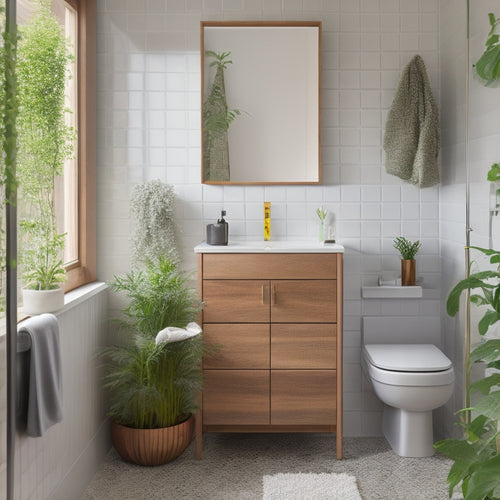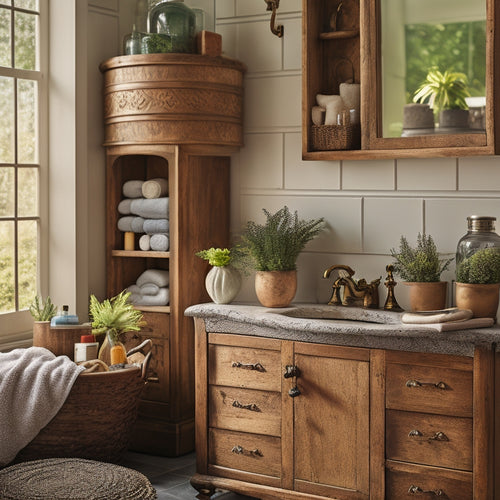
Boost Organization: Master Your Home With Lists
Share
Mastering the art of list-making is essential to achieving a well-organized home, as it allows individuals to prioritize tasks, reduce overwhelm, and increase efficiency in their decluttering and organizational efforts. By implementing effective list-making strategies, such as starting with broad categories and breaking down into specific subcategories, individuals can create a clear roadmap for their organizational tasks. A structured approach to organizing, including the use of worksheets and room-specific lists, can lead to a more efficient living space. As you tailor your approach to each room, you'll uncover the secrets to maximizing your home's potential.
Key Takeaways
• Create a structured approach to organizing by utilizing worksheets, tracking items, and planning supplies for a more efficient living space.
• Make effective lists by starting with broad categories, breaking them down into specific tasks, and including necessary items for organizing.
• Prioritize tasks and reduce overwhelm by identifying areas for storage optimization and using vertical space effectively.
• Streamline decluttering by creating a tailored approach for each room, focusing on room-specific tips, and tackling clutter hotspots efficiently.
• Boost organization by implementing efficient labeling systems, designing layouts for streamlined movement, and tracking progress with lists.
Harnessing the Power of Lists
By leveraging the benefits of making a list for organizing, individuals can transform their homes into havens of efficiency and productivity. List making benefits include prioritizing tasks, providing a clear roadmap, reducing overwhelm, increasing efficiency, and tracking progress.
Effective list making strategies involve starting with broader categories, breaking down into specific subcategories, and including necessary items for organizing. Room-specific lists are also essential, as they tailor organization to each space, prevent overlooking areas, and enable focused decluttering.
Worksheet utilization can further guide systematic decluttering, aid in tracking items to organize, and plan needed supplies. By harnessing the power of lists, individuals can create a structured approach to organizing their homes, leading to a more efficient and productive living space.
Organizing Your Space Effectively
When it comes to organizing your space effectively, a well-crafted list serves as an essential foundation for transforming cluttered areas into havens of efficiency and productivity. By creating a detailed list, you can prioritize tasks, optimize space, and maximize storage. Here are three key considerations to keep in mind:
-
Optimize Storage: Identify areas where storage can be maximized, such as using vertical space or investing in multi-functional furniture.
-
Efficient Labeling: Implement a labeling system that allows for quick identification of stored items, making it easier to find what you need when you need it.
-
Streamlined Layout: Design a layout that promotes efficient movement and workflow, reducing clutter and increasing productivity.
Streamlining Your Decluttering Process
To streamline your decluttering process, it is essential to create a tailored approach that addresses the unique needs of each room and area in your home. This involves developing effective decluttering strategies that cater to the specific requirements of each space.
By adopting room-specific tips, you can focus on the most critical areas and tackle clutter hotspots efficiently. For instance, in the kitchen, prioritize decluttering countertops and organizing kitchen utensils, while in the bedroom, focus on sorting through clothing and organizing storage spaces.
Frequently Asked Questions
How Do I Maintain My Organized Space Over Time?
To maintain an organized space over time, focus on habit formation by scheduling regular space refreshes, setting reminders, and creating a maintenance routine to guarantee consistent upkeep and prevent clutter accumulation.
Can I Customize My Lists for Specific Personal Needs?
"Tailor your lists like a master chef customizes a recipe, incorporating personal priorities and adaptive systems to suit your unique needs, ensuring a seamless fit that evolves with you, just as a well-worn glove conforms to your hand."
What if I'm Not Good at Creating Lists or Organizing?
If you struggle with list creation or organization, don't let list anxiety hold you back. Focus on skill building by starting small, practicing consistently, and adapting strategies to suit your unique needs and learning style.
Are Digital Lists as Effective as Physical Ones for Organization?
Research suggests that digital lists can be just as effective as physical ones for organization, as long as they align with individual digital habits and personal preferences, allowing for seamless integration into daily routines.
How Often Should I Review and Update My Organization Lists?
To avoid List Fatigue, review and update your organization lists regularly, ideally during seasonal shifts, to guarantee relevance and effectiveness, and inject a Seasonal Refresh to maintain momentum and optimize your organizational systems.
Related Posts
-

Small Bathroom Cabinet Design Inspiration
If you're looking for small bathroom cabinet design inspiration, think vertical! Employ wall-mounted racks and floati...
-

Multi-Functional Vintage Bathroom Storage Units
Multi-functional vintage bathroom storage units merge style with function, helping you create an organized and aesthe...
-

Unleash Your Creativity: Cricut Projects Galore
Ignite your creativity with a Cricut machine, where beginners can start with fundamental projects like vinyl decals a...


